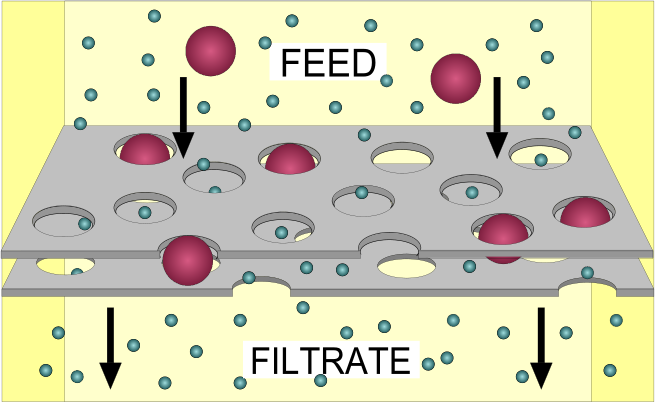
-
Reabsorption
In renal physiology, reabsorption or tubular reabsorption is the process by which the nephron removes water and solutes from the tubular fluid (pre-urine) and returns them to the circulating blood. It is called reabsorption (and not absorption) both because these substances have already been absorbed once (particularly in the intestines) and because the body is reclaiming them from a postglomerular fluid stream that is well on its way to becoming urine (that is, they will soon be lost to the urine unless they are reclaimed). Substances are reabsorbed from the tubule into the peritubular capillaries. This happens as a result of sodium transport from the lumen into the blood by the Na+/K+ATPase in the basolateral membrane of the epithelial cells. Thus, the glomerular filtrate becomes more concentrated, which is one of the steps in forming urine. Reabsorption allows many useful solutes (primarily glucose and amino acids), salts and water that have passed through Bowman’s capsule, to return to the circulation. These solutes are reabsorbed isotonically, in that the osmotic potential of the fluid leaving the proximal convoluted tubule is the same as that of the initial glomerular filtrate. However, glucose, amino acids, inorganic phosphate, and some other solutes are reabsorbed via secondary active transport through cotransport channels driven by the sodium gradient.
Renin–angiotensin system:
The kidneys sense low blood pressure.
Release renin into the blood.
Renin causes production of angiotensin I.
Angiotensin-converting enzyme (ACE) converts angiotensin I to angiotensin II.
Angiotensin II stimulates the release of aldosterone, ADH, and thirst.
Aldosterone causes kidneys to reabsorb sodium; ADH increases the uptake of water.
Water follows sodium.
As blood volume increases, pressure also increases.
Also one can take reabsorption as “the process of absorbing again”.
-
Filtration
Filtration is any of various mechanical, physical or biological operations that separate solids from fluids (liquids or gases) by adding a medium through which only the fluid can pass. The fluid that passes through is called the filtrate. In physical filters oversize solids in the fluid are retained and in biological filters particulates are trapped and ingested and metabolites are retained and removed. However, the separation is not complete; solids will be contaminated with some fluid and filtrate will contain fine particles (depending on the pore size, filter thickness and biological activity). Filtration occurs both in nature and in engineered systems; there are biological, geological, and industrial forms. For example, in animals (including humans), renal filtration removes waste from the blood, and in water treatment and sewage treatment, undesirable constituents are removed by absorption into a biological film grown on or in the filter medium, as in slow sand filtration.
-
Reabsorption (noun)
The subsequent absorption of emitted radiation
-
Reabsorption (noun)
The subsequent absorption of a secreted substance
-
Filtration (noun)
The act or process of filtering; the mechanical separation of a liquid from the undissolved particles floating in it.
-
Reabsorption (noun)
the process of absorbing something again
“diuretics act primarily by blocking reabsorption of sodium”
-
Filtration (noun)
the action or process of filtering something
“small particles are difficult to remove without filtration”
